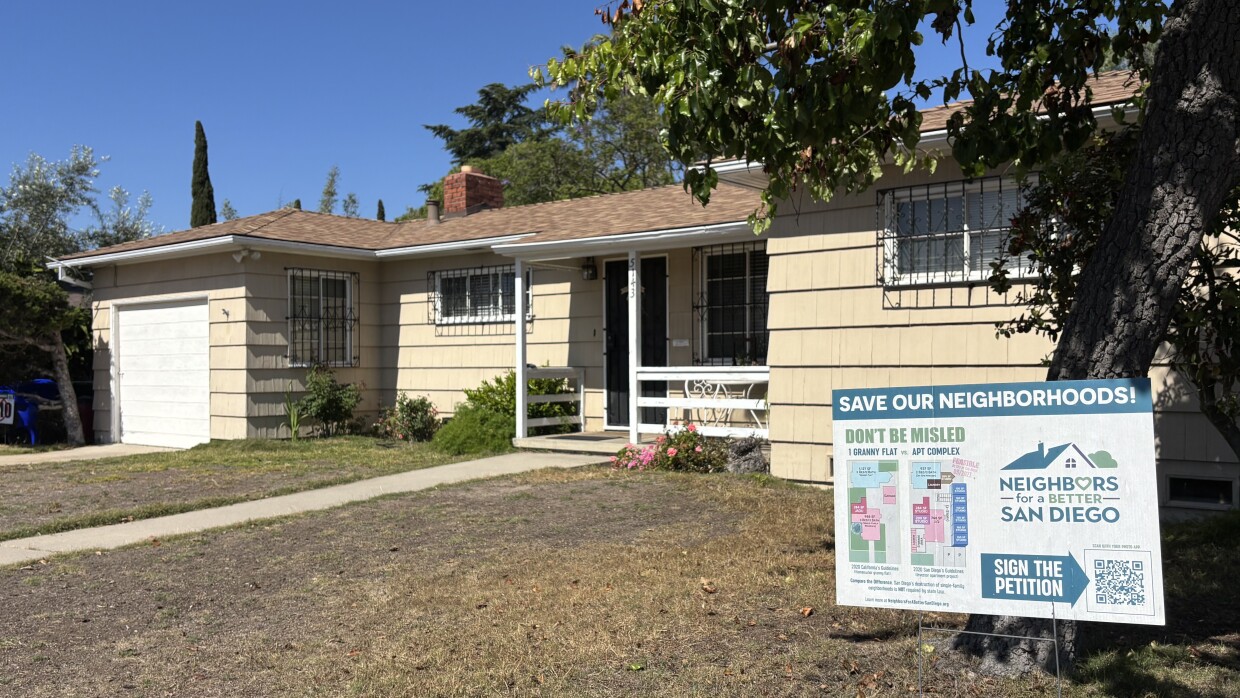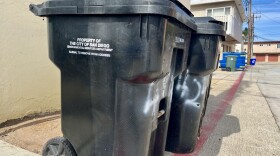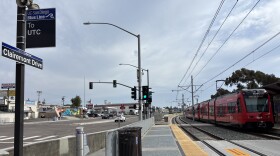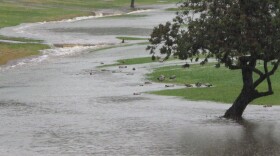
The San Diego City Council is preparing to vote on changes to a landmark program that incentivizes property owners to build accessory dwelling units (ADUs).
The program is San Diego's hottest housing policy debate since Mayor Todd Gloria began his second term. The reforms passed through a City Council committee on May 15, and are expected to go before the full council in June.

The city's ADU bonus program was adopted in 2019 under former Mayor Kevin Faulconer.
It allows homeowners to build at least four additional units on their property if they agree to place affordable rent restrictions on one of the units. Under state law, they can build only two ADUs.
If the home is near public transit, the homeowner can build even more units — depending on the lot size, height limit and other zoning restrictions.

The program has led to a backlash in neighborhoods like Clairemont, Encanto and Kensington, where many homeowners see large ADU developments as an assault on community character.

In response to the backlash, Mayor Todd Gloria is proposing a host of changes. He wants to roll back the ADU bonus program with new fees, parking requirements and restrictions in wildfire hazard zones.
He also proposes totally eliminating the ADU bonus program in neighborhoods zoned for very low density.

A KPBS analysis of the mayor's proposal found it would result in fewer opportunities to build housing in San Diego's nicest neighborhoods — those with the best schools, cleanest air and most access to economic opportunity.

This is California's "Opportunity Map." It compiles neighborhood-level data on things like home values, household income, student achievement and environmental pollution. Neighborhoods are classified as low-, moderate-, high- or highest-resource.
The map is updated each year to ensure California is building integrated neighborhoods, where the rich and poor share the same resources like roads, schools and parks.

This is a map of neighborhoods where Gloria proposes eliminating the ADU bonus program. These are areas zoned for very low density.

87% of the land where Gloria proposes ending the ADU bonus program is classified as high- or highest-resource on the state's Opportunity Map.
That means fewer opportunities to build housing in neighborhoods with the best schools, cleanest air and most access to economic opportunity.
Studies show children who grow up in high-opportunity neighborhoods live longer and healthier lives.

This is a map of San Diego's "racially concentrated areas of affluence." The state created this map in 2022 to ensure cities are working to desegregate neighborhoods and undo the legacy of past racist housing policies.
These areas of Point Loma, Mission Hills, Kensington, Bay Park, Allied Gardens, La Jolla, University City, Scripps Ranch and Del Mar Heights are among the whitest and wealthiest neighborhoods in California.
Some scholars see these areas as evidence of "opportunity hoarding" — when a small group accumulates outsized wealth and privilege, leaving fewer and lower-quality resources for everyone else.

Under Gloria's proposal, roughly 25% of San Diego's "racially concentrated areas of affluence" would be newly off-limits to the ADU bonus program.
This would mean fewer opportunities to build lower-cost housing in neighborhoods with the most wealth and privilege.

San Diego is required under state law to "affirmatively further fair housing."
This means it must take proactive steps to correct the injustices of the past, when government policy barred people of color from buying homes in white neighborhoods and cities used zoning laws to segregate by race and class.

"All of the city’s housing efforts are intentionally focused on increasing affordable housing opportunities in all neighborhoods, particularly in high-resource areas," said Peter Kelly, spokesperson for the San Diego City Planning Department. "Approximately 78% of the zones that will remain in the program are located in moderate-, high- and highest-resource areas.
Additionally, overall fair housing cannot be evaluated in the context of a single program, particularly a bonus program that is optional. The city has increased capacity for more housing in recent years, most significantly in the city’s highest resource areas, such as through the University Community Plan Update and Hillcrest Focused Plan Amendment to the Uptown Community Plan."

"Accessory dwelling units can be the entry point a family needs to gain access to a great community, and we shouldn’t lose sight of that," said San Diego City Councilmember Kent Lee, who chairs the council's Land Use and Housing Committee. "As the council seeks to fix issues with the program, we need to be mindful we don’t create new ones. I hope to achieve the right balance at the City Council hearing."

Danna Givot, vice chair of Neighbors for a Better San Diego, said KPBS' analysis "overstates the impact of the excluded zones on the ADU program," and that most ADUs are being built in low- and moderate-resource areas because these areas are likelier to be near public transit.
"As long as the bonus ADU program is limited geographically by the (sustainable development area) and the presence of existing and future transit, it is going to direct deed-restricted housing to lower opportunity neighborhoods," Givot said. "This will leave the high and higher opportunity zones comparatively more protected from bonus ADUs and outlier projects."

"These maps show the new ADU proposal would protect wealthy enclaves and expect less-resourced communities to solve our housing shortage," said Saad Asad, spokesperson for the YIMBY Democrats of San Diego County. "And if we continue to restrict homes in areas with good schools and jobs, we end up with more traffic and higher house prices for everyone."





